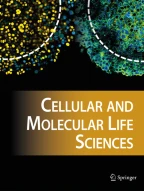Abstract
In recent years, a number of mammalian zinc transporters have been identified, and candidate genes are rapidly growing. These transporters are classified into two families: ZIP (ZRT, IRT-like protein) and CDF (cation diffusion facilitator). ZIP members facilitate zinc influx into the cytosol, while CDF members facilitate its efflux from the cytosol. Molecular characterization of the transporters has brought about major advances in our understanding of their physiological functions. Zinc metabolism is regulated primarily through zinc-dependent control of transcription, translation, and intracellular trafficking of transporters. Analyses of mice whose zinc transporter genes have been genetically disrupted and of the naturally occurring mutant mice with symptoms related to abnormal zinc metabolism have provided compelling evidence that some zinc transporters play critical roles in zinc homeostasis. In this review, we review the literature of mammalian zinc transporters with emphasis on very recent findings and elicit integrative knowledge of zinc homeostasis.
Similar content being viewed by others
Author information
Authors and Affiliations
Corresponding author
Additional information
Received 17 April 2003; received after revision 9 June 2003; accepted 23 June 2003
Rights and permissions
About this article
Cite this article
Kambe, T., Yamaguchi-Iwai, Y., Sasaki, R. et al. Overview of mammalian zinc transporters. CMLS, Cell. Mol. Life Sci. 61, 49–68 (2004). https://doi.org/10.1007/s00018-003-3148-y
Issue Date:
DOI: https://doi.org/10.1007/s00018-003-3148-y
